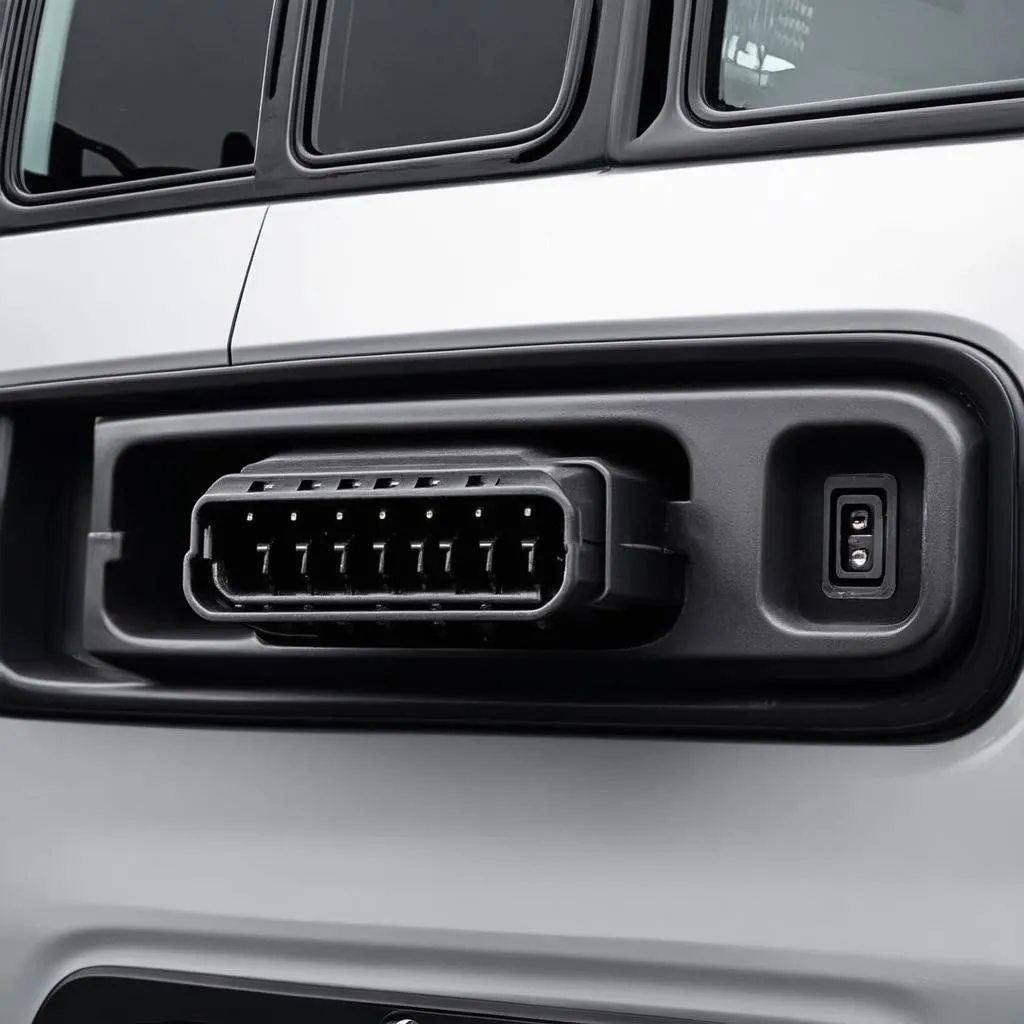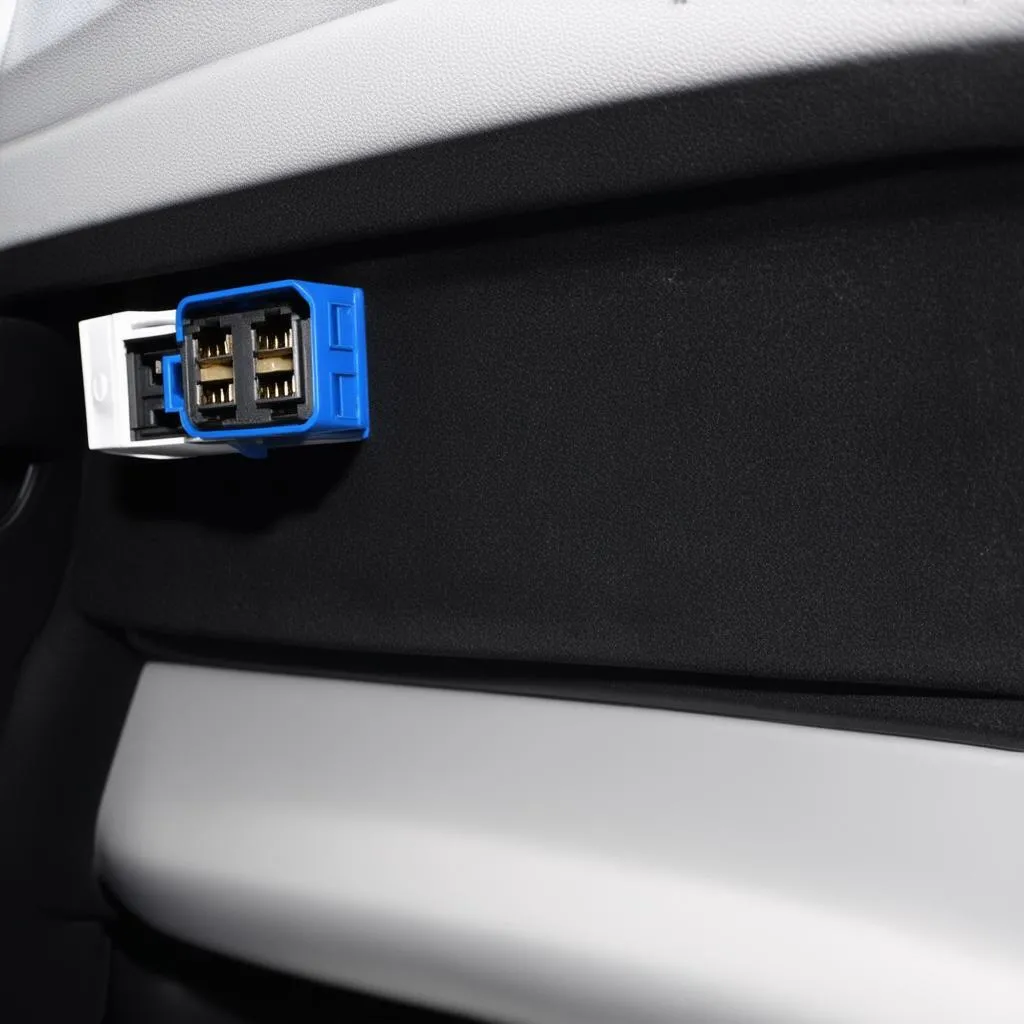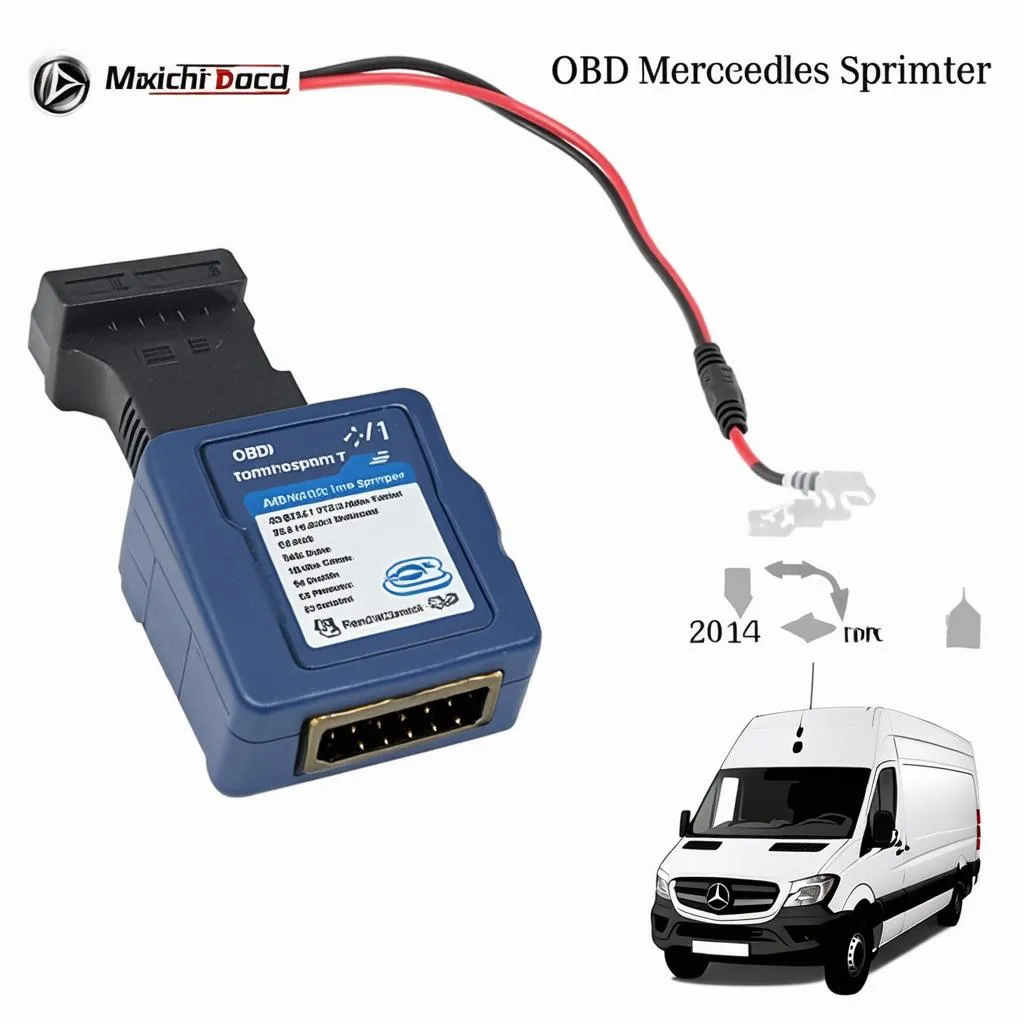Have you ever been stranded on the side of the road, desperately trying to figure out what’s wrong with your 2014 Mercedes Sprinter? Maybe you’re just a DIY enthusiast looking to get your hands dirty and learn more about your vehicle. Whatever the case may be, finding the OBD port on your Sprinter is often the first step. This is where things get a bit tricky, as the location can vary depending on the specific model year and trim level. But don’t worry, we’re here to guide you through the process and equip you with the knowledge you need.
Understanding the OBD Port and Its Significance
The OBD (On-Board Diagnostics) port, often referred to as the “diagnostic connector,” is a crucial element of your vehicle’s communication system. It acts as a gateway for diagnostic tools to access the vehicle’s control modules and retrieve valuable information. Think of it as a communication channel between your vehicle and a “listening” tool, allowing you to understand the inner workings of your Sprinter.
Obtaining Vital Data:
The OBD port provides access to a wealth of data that can help you diagnose and troubleshoot problems. It enables you to:
- Identify Fault Codes: These codes are like cryptic messages from your vehicle’s engine control module, hinting at potential issues.
- Monitor Real-time Data: You can view parameters like engine speed, fuel pressure, and coolant temperature in real-time, providing insights into your vehicle’s performance.
- Read Vehicle Information: Access details about your Sprinter, such as VIN number, mileage, and service history.
The Importance of Location
Knowing the exact location of the OBD port is critical. It’s the first step in connecting your diagnostic tool, enabling you to access the valuable information mentioned above.
Finding the OBD Port on Your 2014 Mercedes Sprinter
 Mercedes Sprinter OBD Port
Mercedes Sprinter OBD Port
The 2014 Mercedes Sprinter OBD port is typically located under the dashboard on the driver’s side. To find it, follow these steps:
- Look for the steering column: It’s the assembly where the steering wheel attaches to the vehicle.
- Locate the lower panel: This is the panel that covers the area below the steering column.
- Identify the connector: The OBD port is usually a 16-pin connector shaped like a trapezoid. It may be hidden behind a small cover.
 Alternative Mercedes Sprinter OBD Location
Alternative Mercedes Sprinter OBD Location
In some rare cases, the OBD port might be located near the fuse box or behind the glove compartment. This is less common, but it’s worth checking if you can’t find it under the dashboard.
Connecting Your Diagnostic Tool
Once you’ve located the OBD port, you can connect your diagnostic tool. The connector has a unique shape, making it difficult to connect it incorrectly. Here’s a simple guide:
- Align the connector: Carefully align the connector on your diagnostic tool with the port on your Sprinter.
- Push firmly: Gently but firmly push the tool into the port until it snaps securely in place.
- Power on your tool: Ensure the diagnostic tool is turned on and ready to communicate with your vehicle.
 Mercedes Sprinter Diagnostic Tool
Mercedes Sprinter Diagnostic Tool
FAQs and Tips
1. Why is my OBD port not working?
There are a few reasons why your OBD port might not be working:
- Damaged connector: The connector itself could be damaged or corroded, preventing a proper connection.
- Fused circuit: The circuit that powers the OBD port might have a blown fuse.
- Software issues: Your diagnostic tool might have outdated software or incompatibility issues with your Sprinter’s system.
2. Can I use any diagnostic tool for my 2014 Mercedes Sprinter?
Not all diagnostic tools are created equal. Some tools are more versatile than others. Look for tools specifically designed for European vehicles, including Mercedes-Benz.
3. Where can I buy a diagnostic tool?
You can find a wide range of OBD diagnostic tools online and at automotive stores. Be sure to read reviews and choose a tool compatible with your 2014 Mercedes Sprinter.
4. What are some common OBD codes on a 2014 Mercedes Sprinter?
Here are some common OBD codes that you might encounter on your 2014 Mercedes Sprinter:
- P0171: System Too Lean (Bank 1)
- P0300: Random/Multiple Cylinder Misfire Detected
- P0420: Catalyst System Efficiency Below Threshold (Bank 1)
- P0446: Evaporative Emission System Vent Control Circuit Malfunction
5. Are there any tips for troubleshooting common OBD codes?
Here are a few tips:
- Start with simple checks: Inspect fuel lines, spark plugs, and air filters.
- Consult repair manuals: Look for detailed instructions on troubleshooting specific codes.
- Seek professional help: Don’t hesitate to consult a qualified mechanic if you’re unsure how to proceed.
Beyond the OBD: Exploring the World of Automotive Technology
Understanding the OBD port is just the tip of the iceberg when it comes to automotive technology. There’s a whole universe of systems and components that work together to keep your Sprinter running smoothly.
As a seasoned automotive enthusiast, I can tell you that the connection between our vehicles and technology is evolving at an incredible pace. From advanced driver-assistance systems to connected car technologies, the future of the automotive industry is exciting and full of possibilities.
Remember, techcarusa.com is your go-to resource for all things automotive. We offer expert advice, insightful articles, and comprehensive guides to help you navigate the world of cars and technology.
Need Help with Your 2014 Mercedes Sprinter?
If you’re struggling with any issues related to your Sprinter, don’t hesitate to reach out. Our team of automotive experts is available 24/7 to provide support. Contact us via WhatsApp: +84767531508. We’re here to help you keep your Sprinter running like new!
Final Thoughts
By understanding the OBD port and its significance, you empower yourself to gain valuable insights into your 2014 Mercedes Sprinter. Armed with this knowledge, you can tackle minor issues, monitor performance, and keep your Sprinter running smoothly for many miles to come.
Don’t forget to share your experiences and questions in the comments below. We love to hear from our community of automotive enthusiasts!